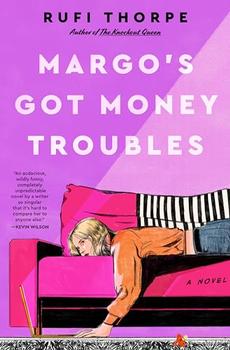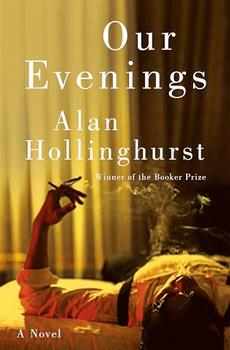(1/15/2024)
Quirky and whimsical. Peculiar and absurd. Is there a genre for eccentric literature? That's the best way to describe this highly imaginative novel by Annie Hartnett that almost gave me whiplash with the many sudden shifts, changes, twists, and turns of the characters and the plot. Readers, fasten your seatbelt!
This is the story of Emma Starling, who grew up in the very small town of Everton, New Hampshire. Her 68-year-old father, Clive, is a poetry professor at the local Meriden College and wears his gray hair in a braided ponytail, sports numerous tattoos (some of which he inked himself), and drives a motorcycle with a sidecar. Her mother, Ingrid, is 16 years younger than her husband and is a librarian at Meriden College, president of the Everton Historical Society, and the sole caretaker of a local historical mansion and its extensive grounds; she is Clive's fourth wife, and the first to bear him children. Emma's younger brother, Auggie, is a recovering drug addict, who lives at home without a job or real purpose.
When the book opens, Emma, 22, is returning home for Thanksgiving from Los Angeles where she attended college and is supposedly in medical school. On her way from the airport in her rental car, she picks up a hitchhiker—a big white dog she names Moses. Her father is dying from a mysterious brain disease that causes hallucinations, forgetfulness, and tremors. He was recently fired from his job when he hallucinated dozens of cats crawling around his classroom and in his panic inappropriately touched one of his female students. Clive hallucinates a lot, mostly animals but also the ghost of naturalist Ernest Harold Baynes, the real-life Doctor Doolittle of New Hampshire, who gives Clive some weird ideas of what to do with his last months on Earth, including helping him order a pet fox from Russia that he names Rasputin.
In addition to having to face her father's final illness, Emma has a big secret that she needs to confess to her parents: Although she was admitted to medical school at UCLA, she got scared and never showed up. Emma was pushed into being a doctor because ever since her birth, the townspeople have believed she has magic healing hands—something the town called "The Charm," but what is also known as charismata iamaton. Meanwhile, Clive is obsessed with finding Crystal Nash, Emma's best friend from high school, who is a heroin addict and has seemingly disappeared. Or is she dead?
Auggie's drug habit, which began with legitimately prescribed opioids for a high school football injury and turned into a heroin addiction, is mirrored many times over in this little town. Emma gets a job as a long-term substitute teacher at the elementary school because the teacher is on leave as her husband, the local used car salesman, is on trial for dealing drugs. There are only eight children in the fifth-grade class, but there should be nine: One of the little girls recently died of leukemia. And, of course, just to add something else to this complicated plot, Emma is falling hard for the former high school hunk who is now a biology teacher at the school.
And there is more! Included in this small New England town is an enclosed, private park of 26,000 acres that is populated by a wide variety of animals, most of which are not native to New Hampshire. It was fenced in 135 years ago by a 19th century robber baron as his grand retirement project. Several anonymous millionaires now own and vacation inside the park, commuting in and out to their hunting cabins by private helicopter.
Here's the quirkiest feature of all: The omniscient narrators of the book—much like a Greek chorus—are the dead people in the town's Maple Street Cemetery.
Whew! See what I mean about literary whiplash? But I give author Annie Hartnett big kudos for making this absurd roller coaster of a book come to a complete and safe stop by ensuring that the loose ends and weird wanderings all fit together in a most fun and enjoyable way. The ending is perfect!
This is a highly imaginative novel with colorful characters and a tragic/comic storyline that borders on hectic it's so busy, but it's always delightful with underlying messages and wisdom about the angst of guilt and shame, the pain and loneliness of grief, and the value of life and love.
More than anything, it is a love letter to animals—from frogs to foxes and bears to boars. Highly recommended!
Bonus: Do read the author's note at the end to find out what (surprisingly!) is true in this novel that apparently is all in the author's imagination.



